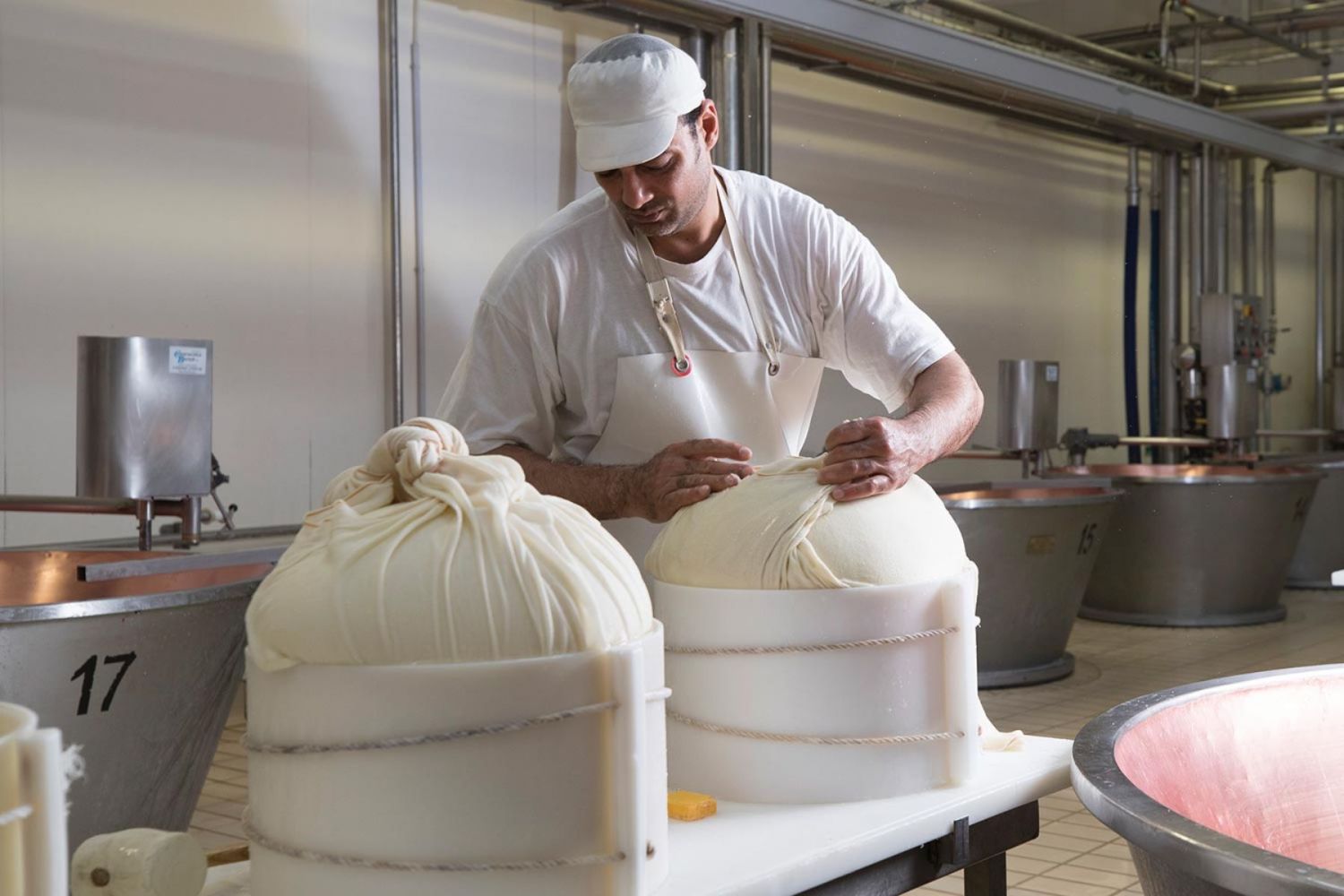Grana Padano
Grana Padano owes its specific organoleptic characteristics to the milk with which it is produced, and to the foods fed to cattle.
Grana Padano is a DOP cheese that must be produced with raw cow's milk, coming from no more than two daily milkings and produced only in dairies authorized by the CSQA (body for the certification of Grana Padano cheese).
The milk must be partially skimmed by natural surfacing, at a temperature between 8°C and 20°C. The milk, from the stable to its processing, cannot undergo any physical, mechanical or thermal treatment that changes its status as natural raw milk.
The milk is then placed in copper inverted bell boilers. The coagulation is obtained with calf rennet, after adding natural whey starter.
The curd is broken into fine granules and cooked until the granules become elastic, at a maximum temperature of 56°C and left totally immersed in the whey, in the same boiler, for up to a maximum of 70 minutes from the end of cooking.
It is then placed in special molds for at least 48 hours, which imprint the marks of origin and then pickled for a period of time between 14 and 30 days starting from pickling.
Natural maturation is carried out by storing the product in an environment with a temperature between 15°C and 22°C for a period of nine months starting from moulding. The product cannot be marketed as Grana Padano D.O.P. before the actual completion of the ninth month of age. Before this deadline the cheese cannot leave the production area.








